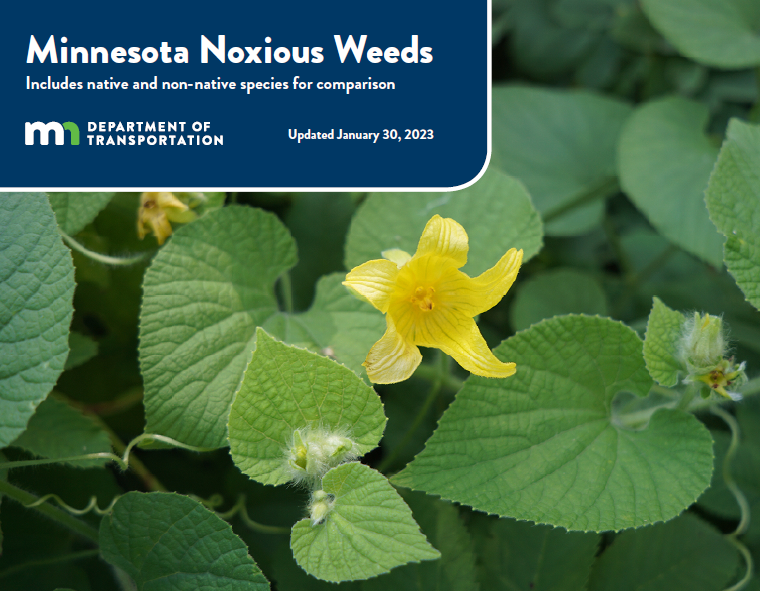|
Having trouble viewing this email? View it as a Web page.
August 1, 2024
August Weed of the Month: Noxious Weed Disposal
There are several methods for destroying noxious weed material without transporting it to a new site
Emilie Justen, Minnesota Department of Agriculture
This year’s growing season has resulted in robust plant growth throughout the state. For gardeners and land managers, that means ongoing weed management of unwanted plants. As fall yard cleanup approaches, people may be pulling or digging noxious weeds that have seeds or other propagating parts, which means special consideration for disposal is necessary.
The first step in effective noxious weed management is to identify the plant species. There are several resources to help you identify plants. Plant identification apps, such as Seek by iNaturalist, can use photos of the plant to try to identify it. The Minnesota Department of Transportation’s online book “Minnesota Noxious Weeds” is helpful for learning about priority invasive plant species in our state. Minnesota Wildflowers’ website and app are helpful plant identification tools as well.
 The first step in noxious weed disposal is weed identification. The Minnesota Department of Transportation's online book "Minnesota Noxious Weeds" is a great resource to identify weeds.
Download photo
Once you’ve identified the plant species, you can check to see if the species is on the Minnesota Noxious Weed List. Noxious weeds are annual, biennial, or perennial plants that the commissioner of agriculture designates as having the potential or are documented as being detrimental to human or animal health, the environment, public roads, crops, livestock, or other property. Each of the categories on the Noxious Weed List has regulations for landowners to ensure that those species are contained and kept from spreading.
To prevent the spread of noxious weeds, there are several methods for destroying noxious weed material without transporting it to a new site:
- Plants can be composted on site. Select a specific area of the property that is used only for noxious weed disposal. Pile the plants on the ground; mixing the material with soil or compost may help degrade the material faster. The compost site will need to be monitored at least a couple times a year, and new seedlings will need to be pulled. Be sure to check with your local ordinances for composting regulations.
- Many noxious weeds can be burned. Always check and follow your local laws and ordinances for burning.
- Legal application of approved herbicides will destroy the plants and let them dry out and decay naturally without the need for cutting or harvesting of the plant material.
Learning about noxious weed management and proper disposal can make a difference in keeping noxious weeds from spreading. Starting with identifying the plants you’ll be managing, you can make plans for proper disposal and keep those weeds from spreading. Learn more about disposal at the MDA’s Guide to Removal and Disposal of Noxious Weeds website.
The Minnesota Department of Agriculture has also launched a new podcast where you can learn more about managing noxious weeds and invasive insects. Check out our first episode of “Smarty Plants” on the MDA website, and subscribe on Spotify or Apple Podcasts to catch all our future episodes.
MEDIA: For more information on Weed of the Month, contact Brittany Raveill, MDA Communications, at [email protected] or 651-201-6131
|